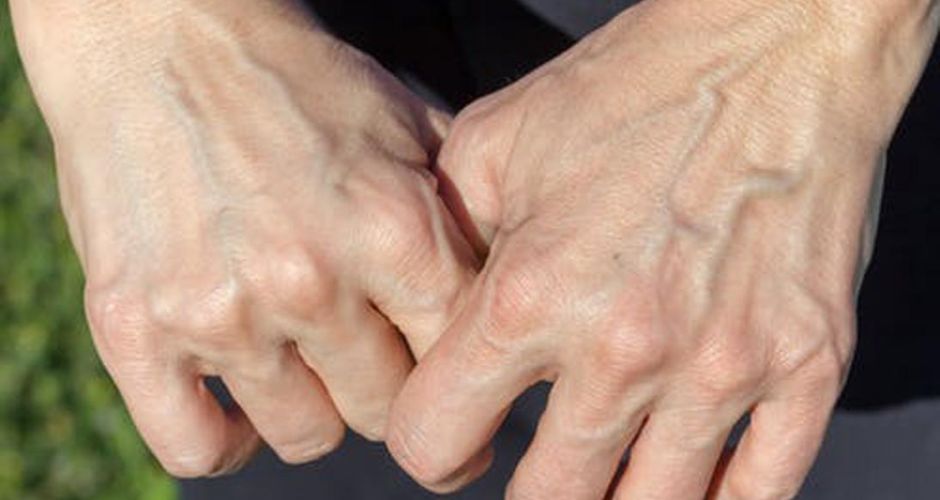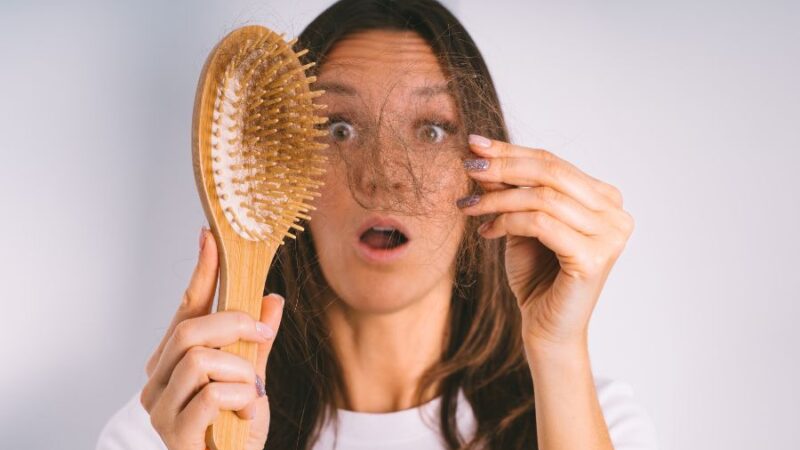Differences Between Green Veins and Blue Veins

Nature’s intricate tapestry showcases a stunning array of colors, and two prominent hues often captivate observers—green veins and blue veins. While both contribute to the visual symphony of the natural world, understanding their differences unveils a fascinating journey into the biology, chemistry, and aesthetics of flora and fauna.
The distinction between green and blue veins in nature is an intriguing exploration of color diversity and biological processes. While both hues contribute to the vibrant tapestry of the natural world, they emerge from distinct mechanisms and hold unique significance.
Why do Veins Look Green?
Veins appear green primarily due to a pigment called hemoglobin and the interaction between light and blood vessels. Hemoglobin is the iron-containing protein in red blood cells responsible for transporting oxygen throughout the body. When oxygen-rich blood flows through arteries, it appears bright red. However, as blood circulates through the body and releases oxygen to tissues, it returns to the heart through veins with a darker, deoxygenated hue.
The greenish tint of veins results from how light interacts with the skin and blood. Being a complex organ, skin scatters and absorbs light differently across the visible spectrum. While oxygenated hemoglobin absorbs more light in the blue part of the spectrum, deoxygenated hemoglobin absorbs more in the red part. The greenish coloration arises from the combination of these absorbed and scattered wavelengths, giving veins a greenish appearance.
Additionally, the human eye is more sensitive to the greenish-blue part of the spectrum. This heightened sensitivity, coupled with the specific absorption and scattering characteristics of skin and blood, contributes to the perceived green color of veins. In essence, the interplay of physiological factors, including the presence of hemoglobin and the optical properties of skin, results in the distinctive green hue we observe when looking at veins beneath the skin’s surface.

Why do Veins Look Blue?
Veins appear blue due to a combination of factors related to the interaction of light with the skin and the nature of blood itself. The perception of blue veins results from how light penetrates and interacts with human tissues, particularly the skin.
Firstly, blood in veins contains deoxygenated hemoglobin, darker than oxygenated hemoglobin in arteries. Deoxygenated hemoglobin absorbs more light in the red part of the spectrum and reflects or transmits more of the blue light. This difference in light absorption between oxygenated and deoxygenated hemoglobin contributes to the overall blue appearance of veins.
Secondly, the skin and underlying tissues also play a role in the perception of vein color. Human skin scatters light differently across the visible spectrum, and the longer wavelengths, such as red and orange, are absorbed more readily. This means that shorter wavelengths, including blue light, penetrate the skin and are reflected to the observer. As a result, the blue light reflecting off the blood vessels contributes to the characteristic blue coloration of veins seen through the skin.
Blue Veins V/S Green Veins
The distinction between green and blue veins in nature is an intriguing exploration of color diversity and biological processes. While both hues contribute to the vibrant tapestry of the natural world, they emerge from distinct mechanisms and hold unique significance.
- Biological Origins: Green veins and blue veins find their roots in distinct biological processes. Explore how chlorophyll, responsible for the green pigment in plant veins, contrasts with anthocyanins and other pigments that contribute to the blue hues in various organisms.
- Environmental Influences: Uncover the environmental factors influencing the manifestation of green and blue hues in different life forms. From sunlight exposure to soil conditions, these factors play a pivotal role in determining the dominant color in veins.
- Aesthetics and Visual Impact: Delve into the aesthetic appeal of green veins and blue veins. Whether seen in plant leaves, animal skin, or geological formations, each color carries its visual significance, contributing to the overall beauty of the natural world.
- Ecological Significance: Examine the ecological roles of green and blue veins in various organisms. From camouflage and thermoregulation to attracting pollinators, the colors serve crucial functions that influence survival and reproduction.
- Adaptations and Evolution: Explore how the development of green and blue veins reflects evolutionary adaptations. Investigate how these colors have evolved as advantageous traits in response to specific environmental challenges and interactions.
- Human Perceptions and Cultural Symbolism: Unravel how humans perceive and interpret green and blue veins. Additionally, delve into the cultural symbolism of these colors, exploring their significance in art, literature, and traditional beliefs.
- Technological Insights: Investigate how technological advancements, such as microscopy and imaging techniques, contribute to a deeper understanding of the molecular structures and pigments responsible for green and blue veins.
- Conservation Implications: Consider the conservation implications related to the presence of green and blue veins. Understand how changes in environmental conditions and human activities may impact the prevalence and vibrancy of these colors in nature.
When to Worry About Varicose Veins
Varicose veins, those twisted and enlarged veins often visible beneath the skin’s surface, are common conditions many people experience. While they are often harmless, certain situations warrant attention to ensure both cosmetic and, more importantly, health concerns are addressed.

- Persistent Pain and Discomfort: If varicose veins are accompanied by persistent pain, throbbing, or aching sensations, it’s crucial to consult a healthcare professional. Discomfort may indicate underlying issues that require evaluation and appropriate management.
- Swelling and Edema: Swelling around varicose veins, especially in the ankles and lower legs, can indicate venous insufficiency. Addressing this swelling promptly is essential to prevent complications and improve overall vascular health.
- Skin Changes and Ulcers: Noticeable changes in the skin surrounding varicose veins, such as discoloration, inflammation, or the development of ulcers, should be taken seriously. These changes may indicate more advanced venous disease that requires medical attention.
- Bleeding from Varicose Veins: If varicose veins rupture or bleed, seek medical help promptly. While this occurrence is uncommon, it can lead to complications and should be addressed to prevent further issues.
- Persistent Itching or Burning Sensations: Unrelenting itching or burning sensations around varicose veins may signal skin inflammation or irritation. Seeking medical advice can help identify the cause and guide appropriate treatment.
- Changes in Vein Appearance: If varicose veins undergo sudden changes in appearance, size, or shape, it may indicate an underlying problem. Regular monitoring and consulting with a healthcare professional can help identify and address these changes.
- Fatigue and Restlessness in Legs: Persistent leg fatigue or a restless feeling, particularly in the evening, can be associated with venous insufficiency. Seeking medical guidance can help identify contributing factors and alleviate symptoms.
- Family History of Venous Disease: Individuals with a family history of venous disease may have a higher risk of developing complications related to varicose veins. Regular check-ups and discussions with healthcare providers can help manage potential risks proactively.
- Impact on Quality of Life: If varicose veins significantly impact your quality of life, whether due to discomfort, cosmetic concerns, or limitations in daily activities, consulting with a vein specialist can provide personalized guidance on available treatment options.
- Pregnancy-Related Varicose Veins: For pregnant individuals experiencing varicose veins, especially if associated with pain or swelling, seeking advice from a healthcare professional is essential to manage symptoms during and after pregnancy.
What does the Color of your Veins say about your Health?
The color of your veins can offer insights into various aspects of your health. While it’s important to note that vein color alone is not a definitive diagnostic tool, certain observations can provide valuable information:
| Vein Color | Possible Health Implications |
| Red or Dark Red | Normal oxygenation, typical for arteries and oxygen-rich veins. |
| Blue or Bluish-Green | Normal color for veins carrying deoxygenated blood, influenced by light interaction with blood and tissues. |
| Enlarged or Bulging | Potential indication of venous insufficiency, weakened vein walls, and faulty valves, leading to varicose veins. |
| Paleness or Whitish | Possible sign of poor blood circulation, which may result from various vascular or health issues. |
| Visible Hand Veins | Normal variation, influenced by skin tone and genetics. Sudden changes or bulging may warrant attention. |
| Red or Warm Near Inflammation | Could indicate localized inflammation or infection, requiring medical evaluation and treatment. |
FAQ’s
Q: What causes blue veins & varicose veins?
A: Blue veins result from the interaction between light and blood vessels. Deoxygenated blood absorbs more red light and reflects or transmits more blue light, especially in veins close to the skin’s surface. Varicose veins, characterized by swollen and twisted veins, often occur when valves weaken, leading to blood pooling. The increased pressure can cause veins to become enlarged and appear more prominently.
Q: Are blue veins in hands a sign of a bulging vein?
A: Blue veins in the hands are generally not a sign of a bulging vein. Veins in the hands can appear more visible due to the skin being thinner, and the blue tint results from the blood’s interaction with light. Bulging veins may be a concern if accompanied by pain, swelling, or other symptoms, and consulting a healthcare professional is advisable for a proper evaluation.
Q4: Why do green veins enlarge?
A: The concept of green veins enlarging is not a common occurrence in human physiology. Green veins play a vital role in nutrient transport and structural support in plants. In humans, vein enlargement, often observed as varicose veins, is more associated with venous insufficiency, weakened vein walls, and faulty valves, leading to blood pooling and vein distortion.






